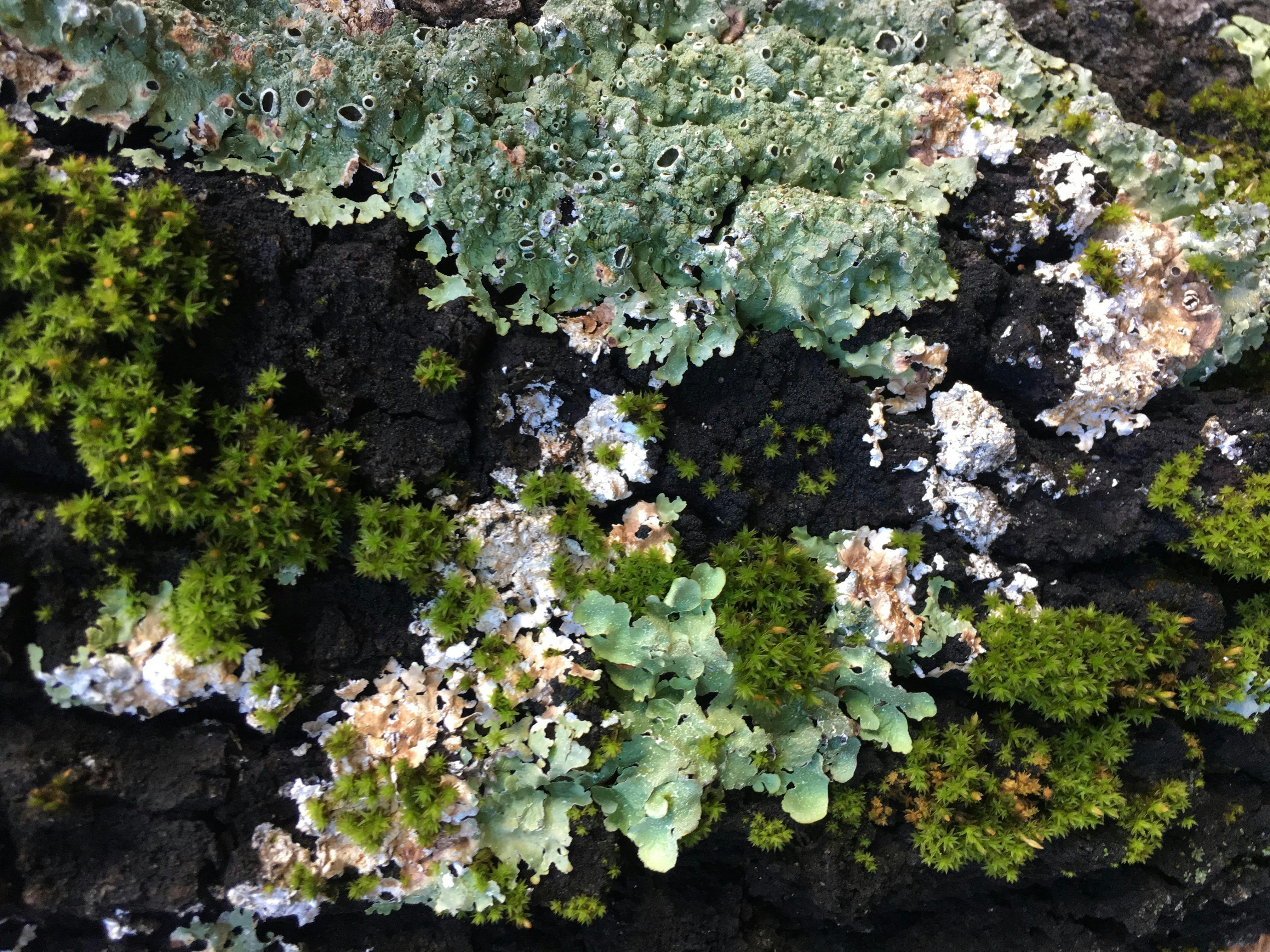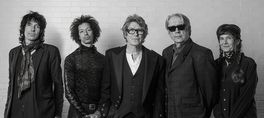Thu June 6, 2019
Speaker series: Mosses are from Mars, Vascular Plants are from Venus
SEE EVENT DETAILS
Speaker: Brent D. Mishler
The bryophytes are the most diverse set of land plants aside from the flowering plants. The group includes three quite distinct lineages (i.e., mosses, hornworts, and liverworts), some familiar species frequently encountered in mesic forests and along streams, as well as a number of less familiar species of tropical rain forests, arctic tundra, and desert boulders. The bryophytes have an ancient history; they are remnant lineages surviving today from the spectacular radiation of the land plants in the Devonian Period, some 400-450 million years ago. Yet despite their diversity, phylogenetic importance, and key roles in the ecosystems of the world, study of many aspects of the biology of bryophytes has lagged behind that of the larger land plants, perhaps because of their small size and the few scientists specializing on them. This talk summarizes what we do know about their biology, as an encouragement for you to get to know them better.
One might assume to start with, that bryophytes are biologically like their larger cousins, just smaller versions. But, in what ways does bryophyte biology different from that of the larger vascular plants? The short answer: in almost every way possible! The groups didn't evolve on different planets, but their differences could almost make you think they did. They certainly adopted very different approaches to being a land plant on this planet. Many aspects need much more study, but what is known about bryophyte biology suggests that in general the bryophytes differ in most ways in their genetics, physiology, ecology, and evolution from vascular plants.
For more information about bryophytes see the article by Marie Antoine in the recent June 2017 issues of Fremontia(Vol 45, Nos. 1&2) and the special bryophyte issue of Fremontia from 2003 (Vol. 31, No. 3) that is online at: http://www.cnps.org/cnps/publications/fremontia/Fremontia_Vol31-No3.pdf
The CNPS Bryophyte Chapter website is rich in information as well: https://bryophyte.cnps.org
The developing California Moss eFlorais a freely available online at: http://ucjeps.berkeley.edu/CA_moss_eflora/index.html
Brent D. Mishler is Director of the University and Jepson Herbaria at University of California, Berkeley, as well as Professor in the Department of Integrative Biology, where he teaches phylogenetic systematics, plant diversity, and island biology. He received his Ph.D. from Harvard University in 1984, then was on the faculty at Duke University for nine years before moving to UC Berkeley in 1993. His research interests are in the systematics, evolution, and ecology of bryophytes, especially the diverse moss genus Syntrichia, as well as in the phylogeny of green plants. He is also interested in more general topics involving the theoretical basis of systematic and evolutionary biology, such as phylogenetic methods and the nature of species. He has been heavily involved in developing electronic resources to present plant taxonomic and distributional information to the public, and for research applications of these data including to the California flora. He is one of the founders of, and incoming President Elect for, the CNPS Bryophyte Chapter.
show less
The bryophytes are the most diverse set of land plants aside from the flowering plants. The group includes three quite distinct lineages (i.e., mosses, hornworts, and liverworts), some familiar species frequently encountered in mesic forests and along streams, as well as a number of less familiar species of tropical rain forests, arctic tundra, and desert boulders. The bryophytes have an ancient history; they are remnant lineages surviving today from the spectacular radiation of the land plants in the Devonian Period, some 400-450 million years ago. Yet despite their diversity, phylogenetic importance, and key roles in the ecosystems of the world, study of many aspects of the biology of bryophytes has lagged behind that of the larger land plants, perhaps because of their small size and the few scientists specializing on them. This talk summarizes what we do know about their biology, as an encouragement for you to get to know them better.
One might assume to start with, that bryophytes are biologically like their larger cousins, just smaller versions. But, in what ways does bryophyte biology different from that of the larger vascular plants? The short answer: in almost every way possible! The groups didn't evolve on different planets, but their differences could almost make you think they did. They certainly adopted very different approaches to being a land plant on this planet. Many aspects need much more study, but what is known about bryophyte biology suggests that in general the bryophytes differ in most ways in their genetics, physiology, ecology, and evolution from vascular plants.
For more information about bryophytes see the article by Marie Antoine in the recent June 2017 issues of Fremontia(Vol 45, Nos. 1&2) and the special bryophyte issue of Fremontia from 2003 (Vol. 31, No. 3) that is online at: http://www.cnps.org/cnps/publications/fremontia/Fremontia_Vol31-No3.pdf
The CNPS Bryophyte Chapter website is rich in information as well: https://bryophyte.cnps.org
The developing California Moss eFlorais a freely available online at: http://ucjeps.berkeley.edu/CA_moss_eflora/index.html
Brent D. Mishler is Director of the University and Jepson Herbaria at University of California, Berkeley, as well as Professor in the Department of Integrative Biology, where he teaches phylogenetic systematics, plant diversity, and island biology. He received his Ph.D. from Harvard University in 1984, then was on the faculty at Duke University for nine years before moving to UC Berkeley in 1993. His research interests are in the systematics, evolution, and ecology of bryophytes, especially the diverse moss genus Syntrichia, as well as in the phylogeny of green plants. He is also interested in more general topics involving the theoretical basis of systematic and evolutionary biology, such as phylogenetic methods and the nature of species. He has been heavily involved in developing electronic resources to present plant taxonomic and distributional information to the public, and for research applications of these data including to the California flora. He is one of the founders of, and incoming President Elect for, the CNPS Bryophyte Chapter.
Speaker: Brent D. Mishler
The bryophytes are the most diverse set of land plants aside from the flowering plants. The group includes three quite distinct lineages (i.e., mosses, hornworts, and liverworts), some familiar species frequently encountered in mesic forests and along streams, as well as a number of less familiar species of tropical rain forests, arctic tundra, and desert boulders. The bryophytes have an ancient history; they are remnant lineages surviving today from the spectacular radiation of the land plants in the Devonian Period, some 400-450 million years ago. Yet despite their diversity, phylogenetic importance, and key roles in the ecosystems of the world, study of many aspects of the biology of bryophytes has lagged behind that of the larger land plants, perhaps because of their small size and the few scientists specializing on them. This talk summarizes what we do know about their biology, as an encouragement for you to get to know them better.
One might assume to start with, that bryophytes are biologically like their larger cousins, just smaller versions. But, in what ways does bryophyte biology different from that of the larger vascular plants? The short answer: in almost every way possible! The groups didn't evolve on different planets, but their differences could almost make you think they did. They certainly adopted very different approaches to being a land plant on this planet. Many aspects need much more study, but what is known about bryophyte biology suggests that in general the bryophytes differ in most ways in their genetics, physiology, ecology, and evolution from vascular plants.
For more information about bryophytes see the article by Marie Antoine in the recent June 2017 issues of Fremontia(Vol 45, Nos. 1&2) and the special bryophyte issue of Fremontia from 2003 (Vol. 31, No. 3) that is online at: http://www.cnps.org/cnps/publications/fremontia/Fremontia_Vol31-No3.pdf
The CNPS Bryophyte Chapter website is rich in information as well: https://bryophyte.cnps.org
The developing California Moss eFlorais a freely available online at: http://ucjeps.berkeley.edu/CA_moss_eflora/index.html
Brent D. Mishler is Director of the University and Jepson Herbaria at University of California, Berkeley, as well as Professor in the Department of Integrative Biology, where he teaches phylogenetic systematics, plant diversity, and island biology. He received his Ph.D. from Harvard University in 1984, then was on the faculty at Duke University for nine years before moving to UC Berkeley in 1993. His research interests are in the systematics, evolution, and ecology of bryophytes, especially the diverse moss genus Syntrichia, as well as in the phylogeny of green plants. He is also interested in more general topics involving the theoretical basis of systematic and evolutionary biology, such as phylogenetic methods and the nature of species. He has been heavily involved in developing electronic resources to present plant taxonomic and distributional information to the public, and for research applications of these data including to the California flora. He is one of the founders of, and incoming President Elect for, the CNPS Bryophyte Chapter.
read more
The bryophytes are the most diverse set of land plants aside from the flowering plants. The group includes three quite distinct lineages (i.e., mosses, hornworts, and liverworts), some familiar species frequently encountered in mesic forests and along streams, as well as a number of less familiar species of tropical rain forests, arctic tundra, and desert boulders. The bryophytes have an ancient history; they are remnant lineages surviving today from the spectacular radiation of the land plants in the Devonian Period, some 400-450 million years ago. Yet despite their diversity, phylogenetic importance, and key roles in the ecosystems of the world, study of many aspects of the biology of bryophytes has lagged behind that of the larger land plants, perhaps because of their small size and the few scientists specializing on them. This talk summarizes what we do know about their biology, as an encouragement for you to get to know them better.
One might assume to start with, that bryophytes are biologically like their larger cousins, just smaller versions. But, in what ways does bryophyte biology different from that of the larger vascular plants? The short answer: in almost every way possible! The groups didn't evolve on different planets, but their differences could almost make you think they did. They certainly adopted very different approaches to being a land plant on this planet. Many aspects need much more study, but what is known about bryophyte biology suggests that in general the bryophytes differ in most ways in their genetics, physiology, ecology, and evolution from vascular plants.
For more information about bryophytes see the article by Marie Antoine in the recent June 2017 issues of Fremontia(Vol 45, Nos. 1&2) and the special bryophyte issue of Fremontia from 2003 (Vol. 31, No. 3) that is online at: http://www.cnps.org/cnps/publications/fremontia/Fremontia_Vol31-No3.pdf
The CNPS Bryophyte Chapter website is rich in information as well: https://bryophyte.cnps.org
The developing California Moss eFlorais a freely available online at: http://ucjeps.berkeley.edu/CA_moss_eflora/index.html
Brent D. Mishler is Director of the University and Jepson Herbaria at University of California, Berkeley, as well as Professor in the Department of Integrative Biology, where he teaches phylogenetic systematics, plant diversity, and island biology. He received his Ph.D. from Harvard University in 1984, then was on the faculty at Duke University for nine years before moving to UC Berkeley in 1993. His research interests are in the systematics, evolution, and ecology of bryophytes, especially the diverse moss genus Syntrichia, as well as in the phylogeny of green plants. He is also interested in more general topics involving the theoretical basis of systematic and evolutionary biology, such as phylogenetic methods and the nature of species. He has been heavily involved in developing electronic resources to present plant taxonomic and distributional information to the public, and for research applications of these data including to the California flora. He is one of the founders of, and incoming President Elect for, the CNPS Bryophyte Chapter.
show less
Date/Times:
1199 9th Avenue, San Francisco, CA 94122
The Best Events
Every Week in Your Inbox
From Our Sponsors
UPCOMING EVENTS
Great suggestion! We'll be in touch.
Event reviewed successfully.









